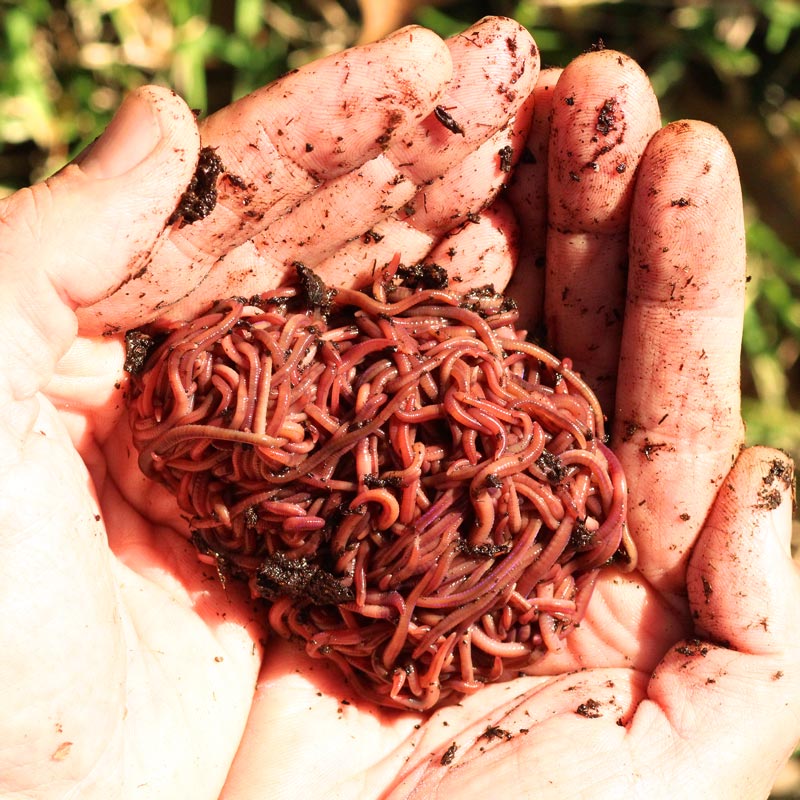Achieve a Vibrant Lawn Using Lake Hickory Bait Lawn Care Resources
Unlock the Tricks of Red Wigglers: Your Overview to Composting Success
The integration of red wigglers right into composting practices presents a substantial opportunity for enhancing dirt wellness and advertising sustainability. These microorganisms are not just reliable recyclers of organic waste; they offer a myriad of benefits that can change yard monitoring. Recognizing their requirements and habits is important for enhancing their capacity, from setting up a suitable worm bin to feeding them the appropriate products. As we check out the important components of effective vermicomposting, one could question how these small animals can cause an extra lively and efficient garden ecological community.

What Are Red Wigglers?
(Red Wiggler Express)Red wigglers, medically called Eisenia fetida, are a varieties of earthworm mostly utilized in composting because of their amazing capacity to break down raw material successfully. These worms are defined by their reddish-brown pigmentation and a segmented body, generally measuring between 3 to 4 inches in size. Unlike other earthworm varieties, red wigglers flourish in abundant, organic atmospheres, making them ideal for vermicomposting systems.
Belonging To North America, they are usually discovered in rotting fallen leaves and compost heap, where they play an important function in nutrient recycling. Their adaptation to living in a wet, cardiovascular environment allows them to consume large quantities of natural waste, simplifying into nutrient-rich castings that boost soil health and wellness.
Red wigglers reproduce rapidly, with a single worm capable of producing several cocoons each week, each including several hatchlings. Comprehending the biology and habits of red wigglers is necessary for optimizing their possibility in composting applications.
Advantages of Utilizing Red Wigglers
Using the power of red wigglers in composting supplies countless advantages that improve soil health and wellness and advertise sustainable waste administration. These amazing microorganisms effectively damage down organic matter, changing cooking area scraps and yard waste right into nutrient-rich vermicompost. This completed product is remarkably helpful for plant growth, as it enhances dirt framework, raises dampness retention, and boosts vitamins and mineral schedule.

(Lake Rhodhiss Bait)In addition, the existence of red wigglers in your composting system can accelerate the composting procedure, creating high-quality garden compost in a portion of the moment compared to traditional methods. The castings produced by these worms are likewise bristling with advantageous microbes that even more enrich the dirt environment.
Establishing Your Worm Container
Creating an efficient worm container is a simple procedure that can dramatically boost your composting efforts. The primary step is choosing an appropriate container. Worm containers can be made from plastic storage space containers, wood boxes, or readily readily available worm bins. Guarantee the bin has appropriate drainage and ventilation openings to maintain optimum dampness levels and air flow.
Next, prepare the bed linens material, which serves as the worms' environment. A mix of shredded newspaper, cardboard, and coconut coir works well, supplying a comfortable setting for the worms.

Feeding Your Red Wigglers
To make sure the health and productivity of your red wigglers, it is vital to give them with a well balanced diet that satisfies their nutritional requirements. Red wigglers grow on a varied variety of organic products, which not only provide needed nutrients but likewise promote efficient composting.
Begin by including kitchen area scraps such as veggie peels, fruit cores, and coffee grounds. Stay clear of citrus fruits, onions, and garlic, as these can be detrimental to worm health. In addition, introduce shredded paper, cardboard, and completely dry fallen leaves to create a well-aerated environment.
Feeding regularity ought to be checked; generally, worms can take in half their body weight in food weekly. It is important to prevent overfeeding, as excess food can result in unpleasant smells and draw in insects. An excellent practice is to include food in tiny amounts, enabling worms to refine it prior to introducing extra.
Preserving moisture degrees is likewise important; the bed linen must perspire but not soggy. Be sure to frequently inspect the temperature and pH degrees of the bin to make certain an optimal atmosphere for your red wigglers, eventually improving their composting performance.
Harvesting and Making Use Of Garden Compost
An effective composting procedure with red wigglers finishes in the abundant, dark garden compost known as vermicompost, which can substantially improve soil health and plant growth. Collecting this nutrient-dense material generally occurs every three to 6 months, relying on the size of your system and the quantity of raw material being processed.
To collect, carefully different the garden compost from the worms and any kind of undecomposed products. One efficient approach involves moving the materials of the container to one side and adding fresh bed linens and food to the vacant space, motivating the worms to move. After a few days, the garden compost can be collected from the contrary side.
It is necessary to use vermicompost correctly to optimize its advantages. It can be made use of as a top dressing for garden beds, blended into official source potting soil, or brewed right into a nutrient-rich fluid fertilizer referred to as "worm tea." This application technique helps to supply vital nutrients directly to plant origins, advertising much healthier development. By incorporating vermicompost into your gardening regimen, you not only recycle natural waste however also produce a growing community that sustains lasting gardening practices.
Verdict
In recap, red wigglers function as exceptional allies in composting initiatives, changing organic waste right into nutrient-rich vermicompost (Red Wiggler Express). Their one-of-a-kind organic qualities and effective waste handling capacities contribute dramatically to sustainable horticulture techniques. By understanding the optimal problems for their habitat, feeding requirements, and garden compost harvesting techniques, gardeners can enhance dirt health and wellness and promote plant vigor. Welcoming vermicomposting not only lowers landfill waste however also promotes a more eco responsible approach to horticulture and source monitoring.